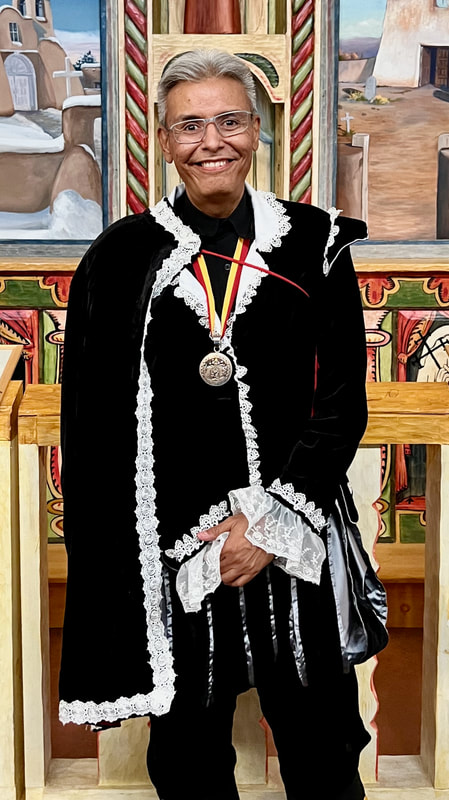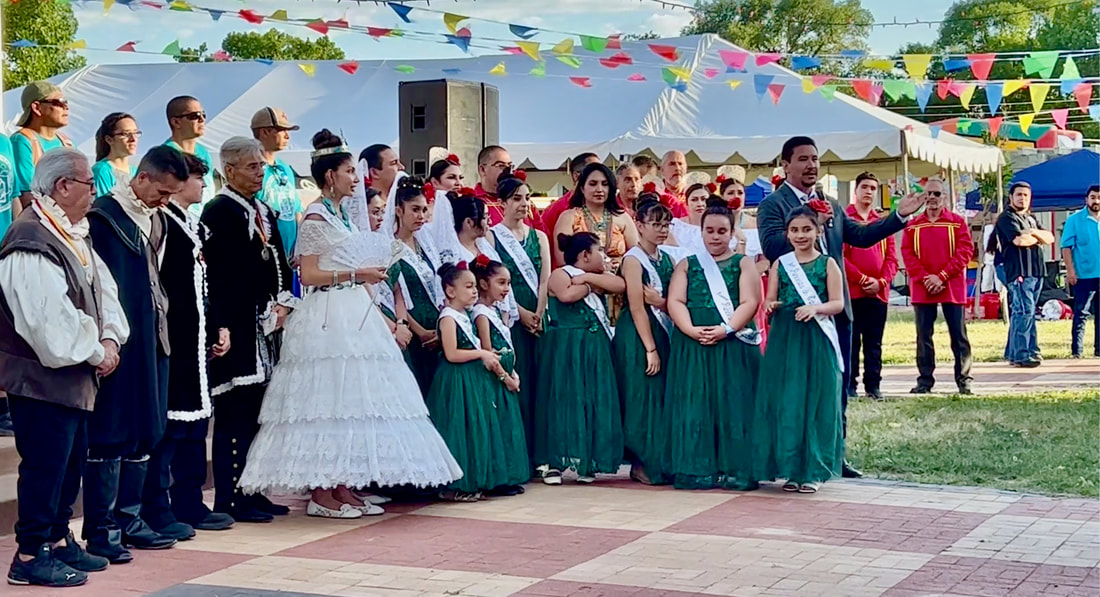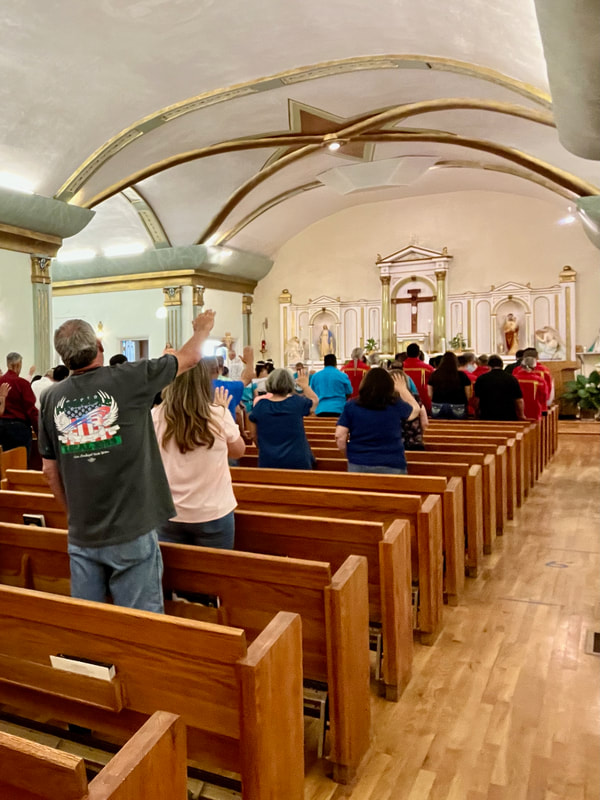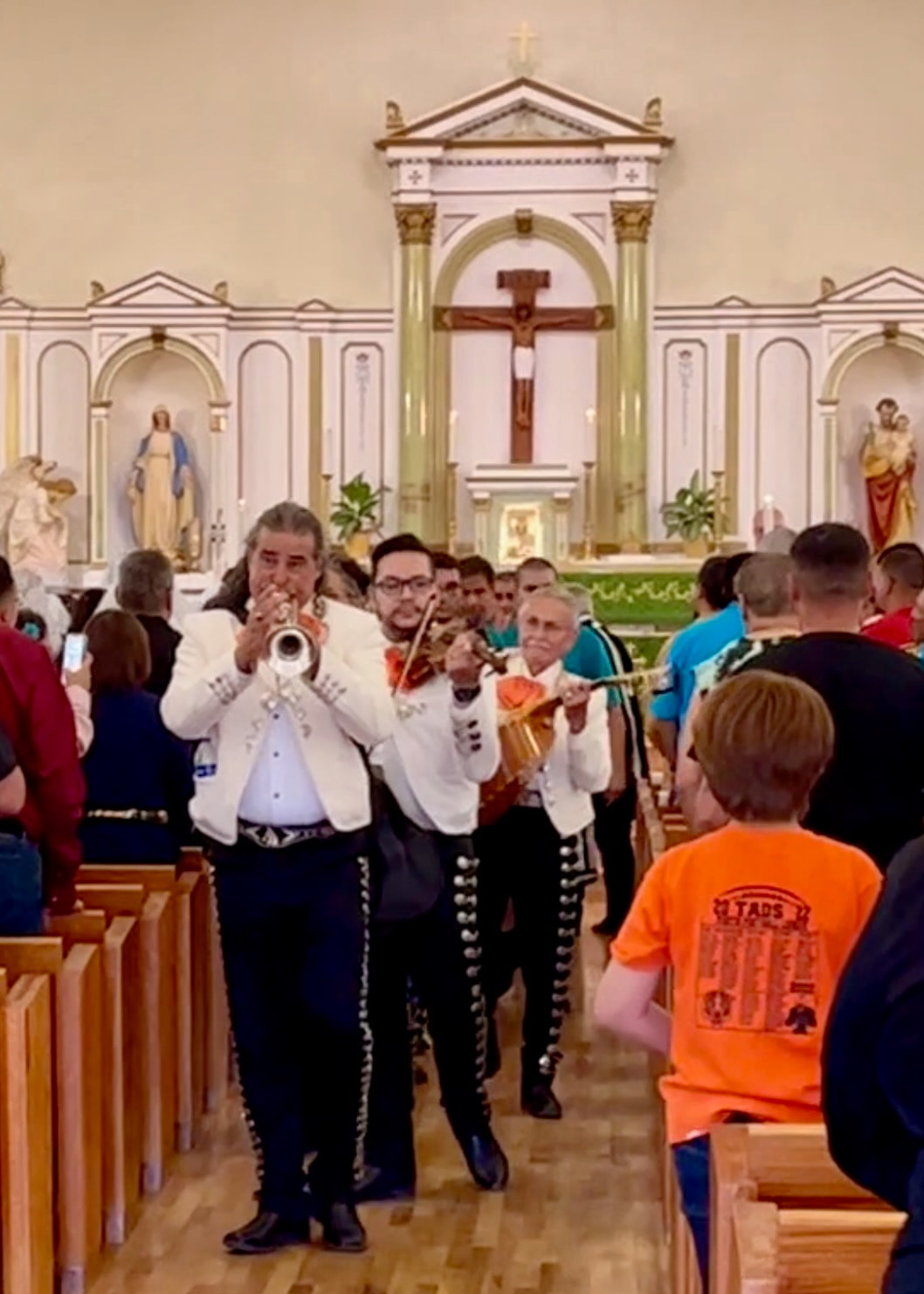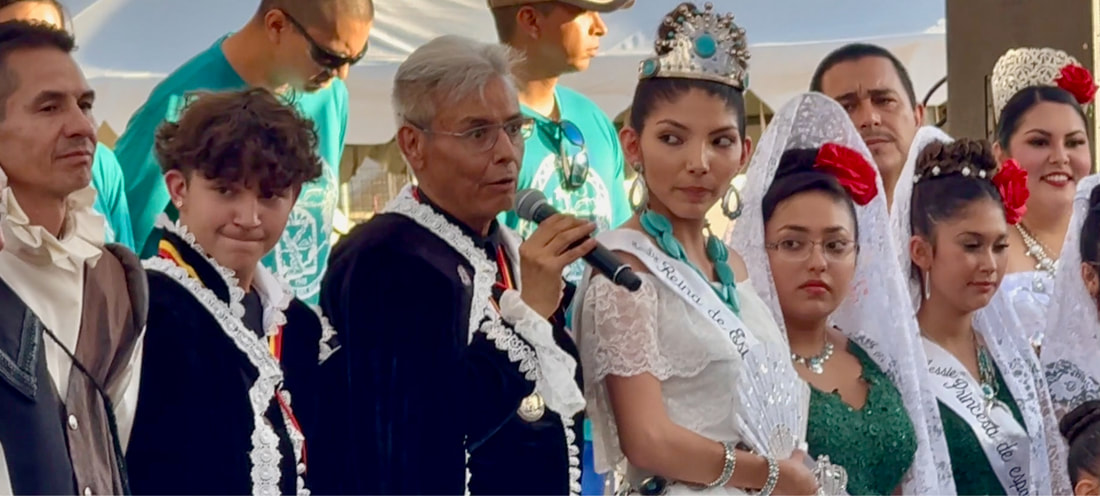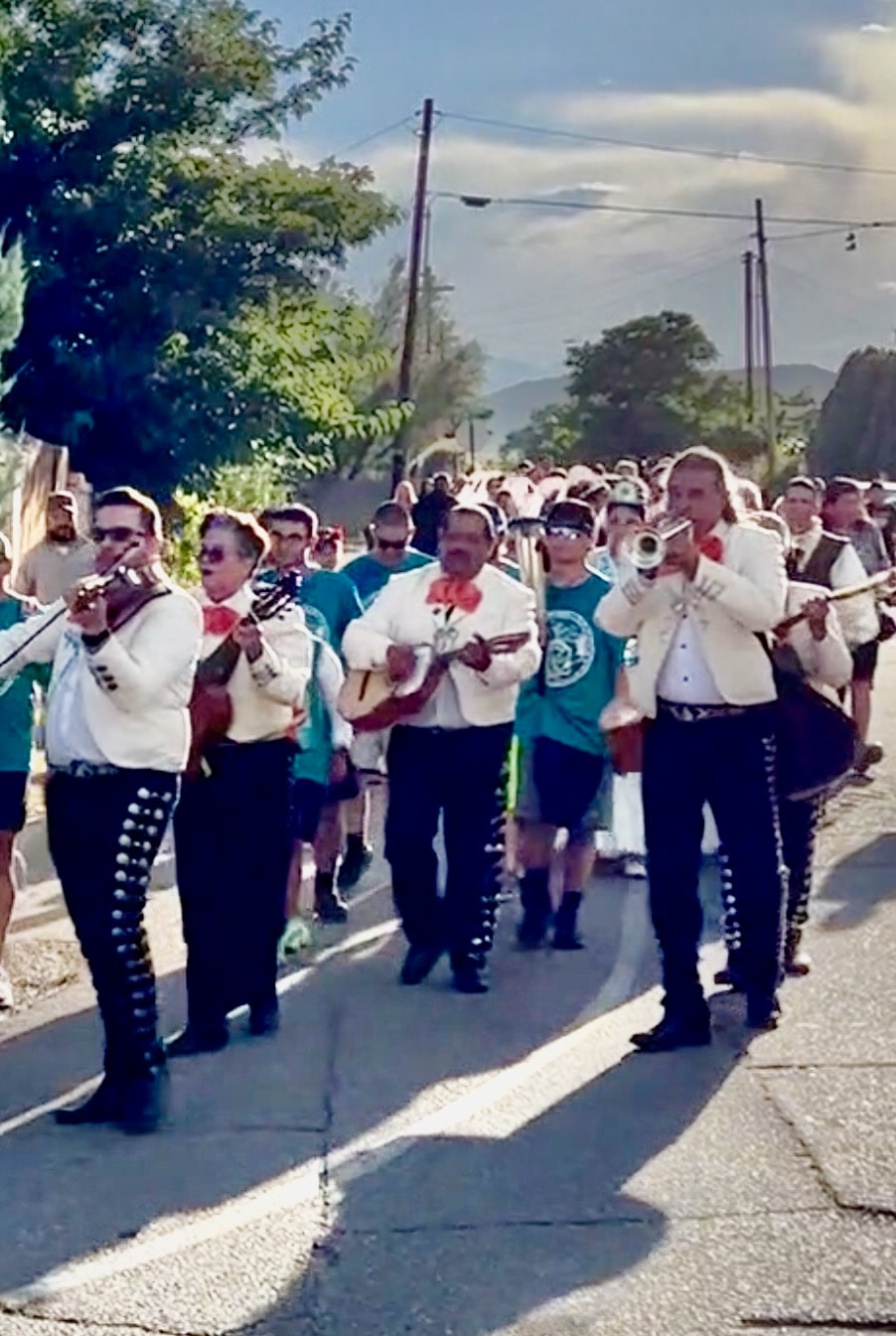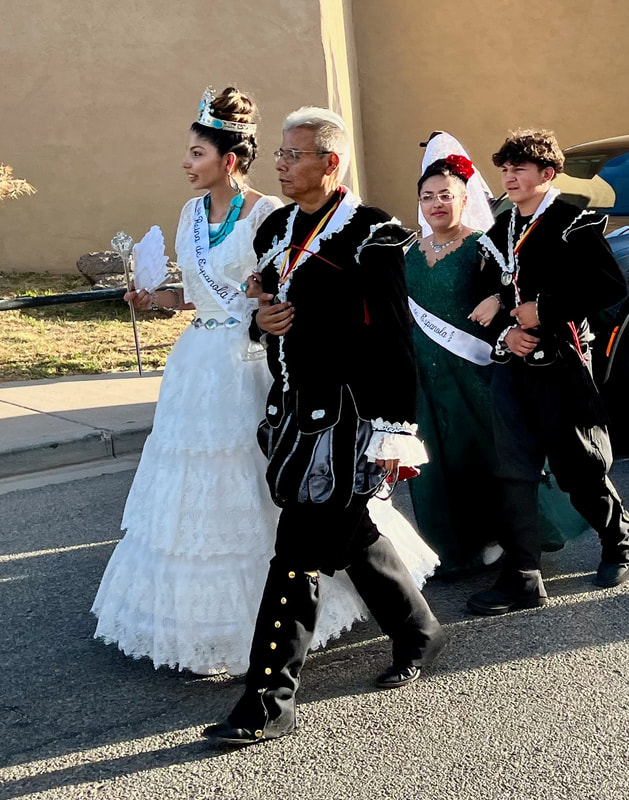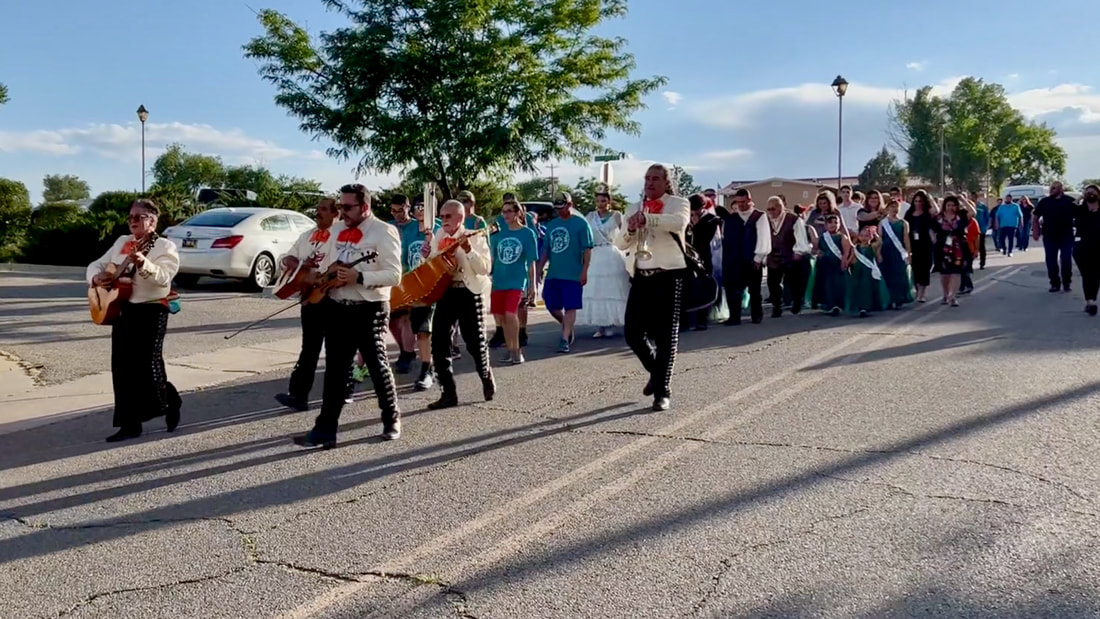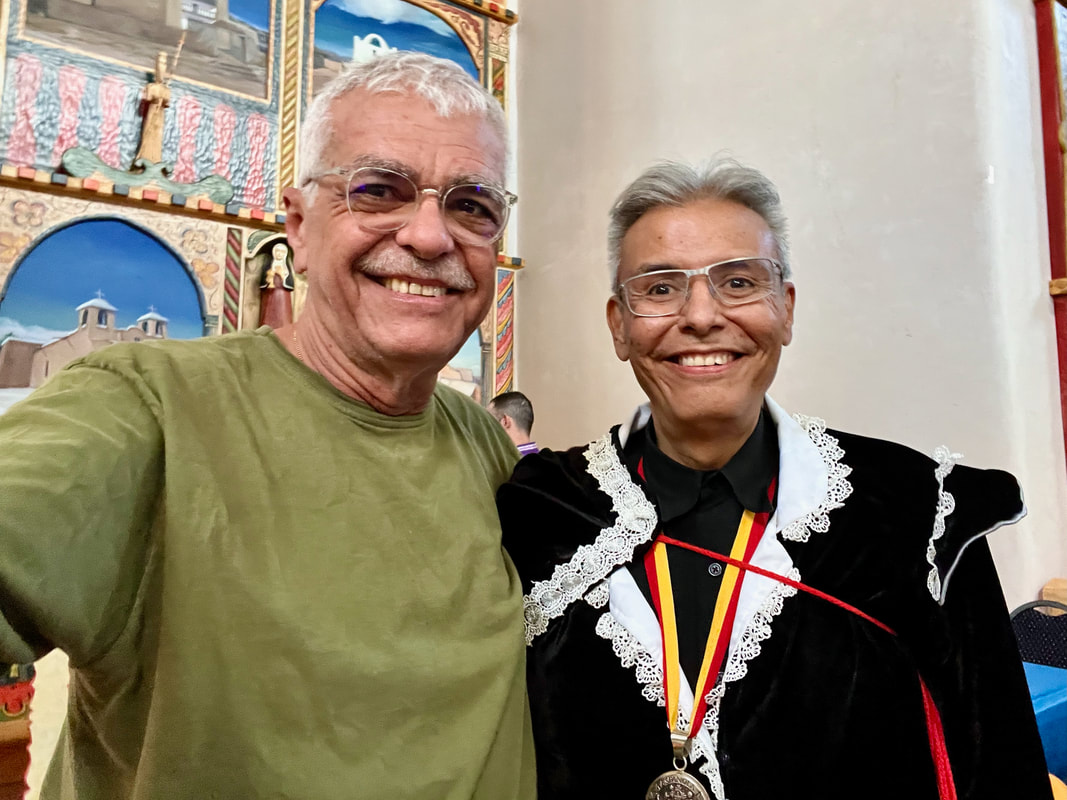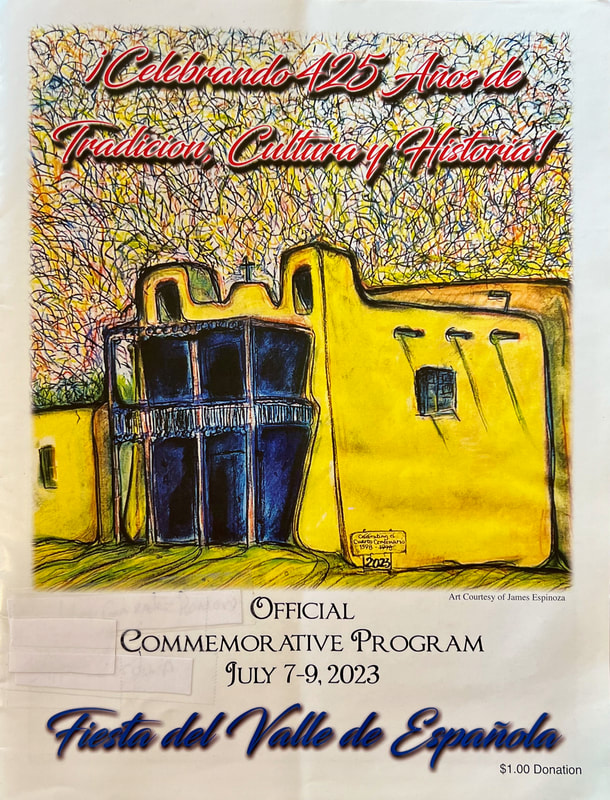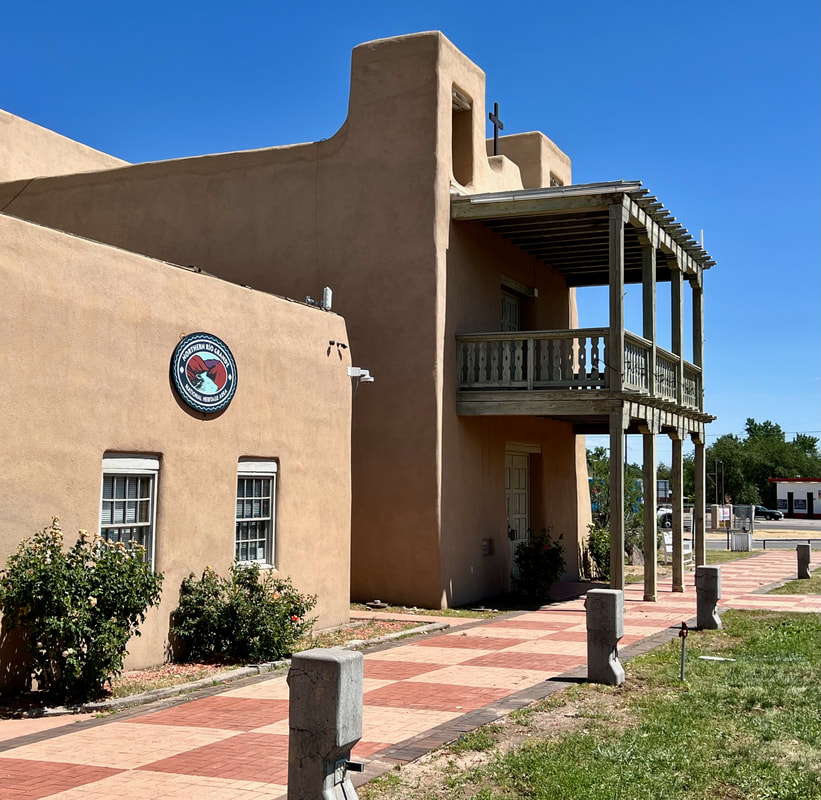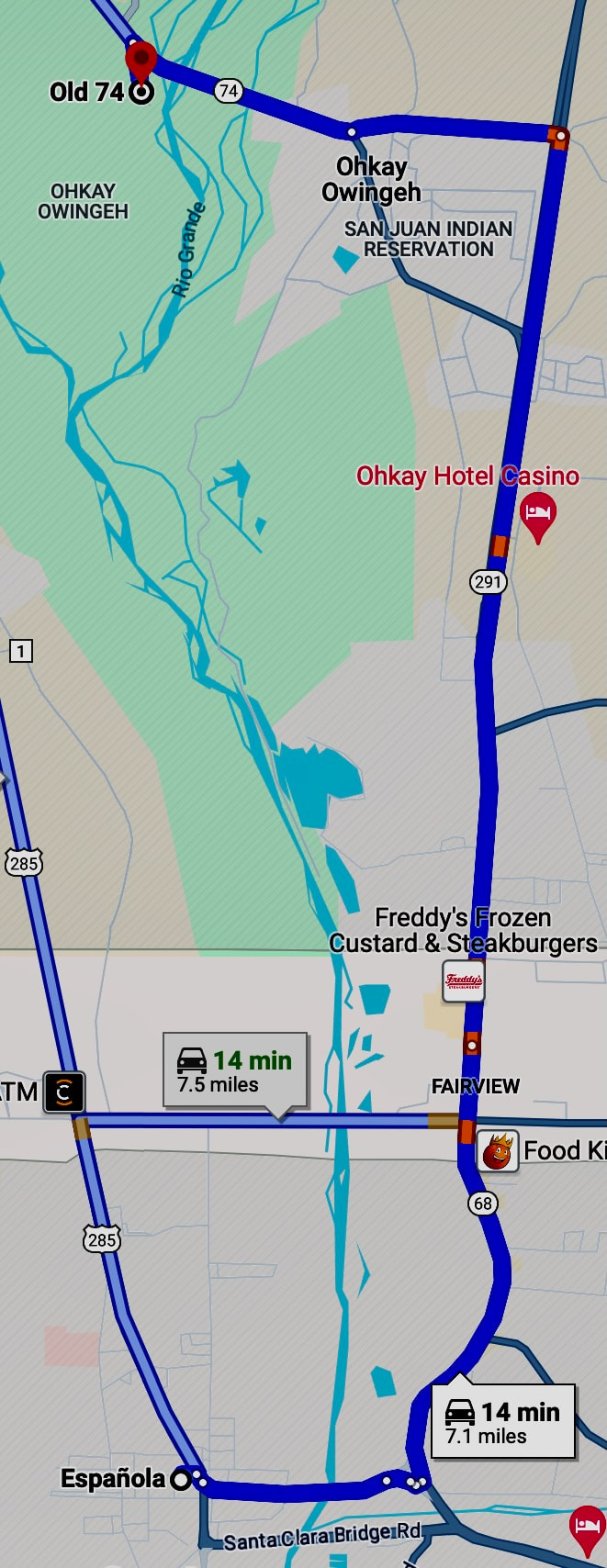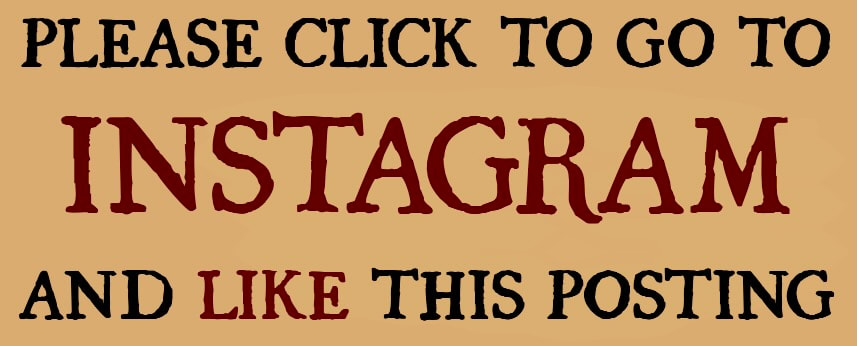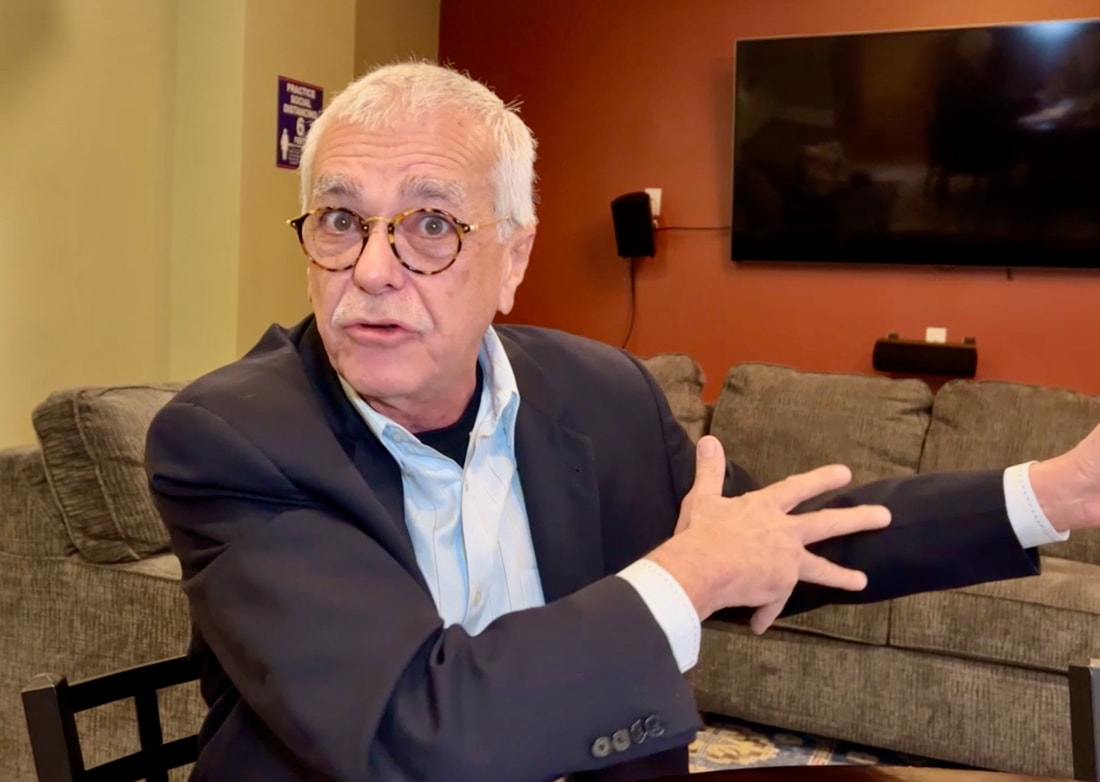EXPLORING NEW MEXICOHistory, faith, culture and pride
|
|
|
By Miguel Pérez
Part 22 of a series They are unlike the many Hispanic heritage celebrations I have seen, and I have seen many! While most East Coast Hispanic parades and festivities are usually held by immigrants celebrating their pride for the respective countries, Hispanic New Mexicans proudly celebrate their centuries of local history. Their ancestors came here some 425 years ago, even before the Pilgrims reached Plymouth Rock, and that's enough history to celebrate. It's a controversial history. Some Hispanics admit that some of their ancestors may have mistreated Native Americans back in the 17th century. |
|
"But we would not be here without them," they tell you. "Had it not been for them, we would not have our culture and our religion."
In spite of some violent chapters in their history, Hispanic New Mexicans are proud of who they are, and they showcase that pride in their annual fiestas to celebrate their Spanish ancestry and important milestones. In Española, they commemorate the 1598 "jornada" (journey) by the Juan de Oñate expedition from Mexico, creating the Camino Real de Tierra Adentro and bringing Christianity and Spanish culture to this area. And for a town of only 10,500 residents, attendance at the festival activities is impressive. |
|
In New Mexico, Oñate's legacy is highly contested between those who see him as the leader who brought their ancestors to this area and those who say he was terribly abusive of Native Americans, back when Nuevo Mexico was a province of New Spain.
Yet the settlers who came with him, and with other Spanish expeditions, established villages that became major cities. And Hispanics who live in those cities today feel they have a commitment to celebrate their ancestors' accomplishments. They do it with three-day fiestas, a series of events that usually begin with a Catholic Mass and procession. The biggest one is Santa Fe (mid-September), where Hispanics commemorate the 1692 recolonization of New Mexico by Don Diego de Vargas. But they also have weekend fiestas in Albuquerque (April), Taos (July), Socorro (late September) and Española (early July), which is where I chose to join the party. |
|
Welcome to the annual Fiesta del Valle de Española!
“Fiesta is the time when we come together to celebrate our community, our culture and our history, when our families came here to this valley in July of 1598 to settle at a wonderful place at the confluence of the Rio Grande in the Rio Chama,” said Española Mayor John Ramon Vigil as he opened the festivities at the Plaza de Española, shortly after clearing the way for a Catholic/Mariachi procession from the nearby Sacred Heart of Jesus Catholic Church. |
|
Vigil said Oñate could have stopped anywhere along the Rio Grande to build his first settlement, “but he decided to stop right here . . . God blessed us to continue to live here in this beautiful valley for 425 years . . . that's older than some of the places back east with the pilgrims.," he added. "There's so much culture and history here to be proud of in this valley.”
Mind you, this is the valley where a prominent statue of Oñate, the first governor of New Mexico, has been removed due to protests by some Native Americans. It is also where many Hispanics refuse to erase him from their history. One of them, Alfonso Jaramillo, who played the role of Oñate during this year's festivities, told me that he was honored to represent Oñate, just as the many others who have had that honor during the many years the Fiesta has been celebrated. It's a tradition! |
|
"We are here to celebrate the fact that Phillip II commissioned Oñate to explore and settle in this area," Jaramillo said. "And yes, we are proud of it."
Yet I sensed that he was saying this without rancor toward Native Americas. Instead, his attitude was conciliatory. He wanted to talk about the positive side of Hispanic relations with Native Americans, about how both groups learned and benefitted from each other. "The Spanish brought new technology to make life easier, like the wheel and farm tools," he said. "And from the natives we gained valuable information on many things, like how to grow corn, maize, in this area." |
|
I had the privilege to interview Jaramillo twice (July 7 and 8) during the Fiesta weekend last July, and later we became friends on Facebook. When I posted a photo of the two of us on Facebook on July 9, he gave it a "like." And since he continued supporting my articles about New Mexico on many other Facebook postings, I was looking forward to sharing this particular article with him.
Yet, I was surprised and deeply saddened to learn that my new friend Alfonso died on October 7, exactly three months after I met him. From an announcement posted on social media by his sister Denise, I learned that his health had begun to decline in recent months after a life long battle with a bleeding disorder known as Hemophilia B. |
|
|
I didn't even know he was ill. But I know this: He was very happy on the day I met him. His pride in his culture and community came shining through his Oñate outfit. He was born in New Mexico, but he was a true Spanish gentleman!
I send my sincere condolences to his family and friends. They should take comfort in knowing that only three months before his death, Alfonso was realizing his dream and bursting with pride. May he rest in peace! A part of me says I'm sorry he didn't get to read this article. But another part of me says he already has! Of course at the Fiesta, Alfonso was not alone. Amid the speeches from the mayor and others, from the crowd there were people shouting, "Que Viva Española" . . . "Que Vivan La Fiestas" . . . "Que Viva Oñate." The immense pride they show for their culture and history, even if controversial, is truly remarkable! |
Below: Española Mayor John Ramon Vigil clearing the way for the Catholic/Mariachi procession
|
|
They dress like conquistadors and señoritas, they express admiration for their Spanish ancestors, and yet they celebrate without animosity toward their Native American neighbors throughout Española Valley. Their goodwill is admirable, although not always returned by those who chose to desecrate Spanish statues.
Although the Fiesta del Valle de Española started 90 years ago (1933), it has had several years-long hiatuses — the latest in 2020 and 2021 because of Covid — but it always comes back as big before, a testament the commitment of Hispanics in Española (citizen volunteers), to preserve their history, faith, culture and pride in their identity. |
|
|
According to the Fiesta’s official commemorative program, the Fiesta has had several names. First, it was the "Oñate Fiesta." In 1976, it was renamed "La Fiesta del Valle por Juan de Oñate." And in 1986, "the Fiesta name was formally changed to 'Fiesta del Valle de Española' to celebrate everything inclusive of the Valley, its people, its cultural traditions, and representative of who we are as a people."
These efforts by Hispanics to be inclusive with their Native American neighbors are clearly visible here. In the welcoming remarks of the Fiesta's program, Mayor Vigil notes that, "The Fiesta is a time to reflect on ALL the cultures of our valley and how they have impacted its development to the present day. It is a celebration of all our communities and how they have woven the fabric of life in this Valley." |
Below: Mariachi Azteca de Santa Fe, showing how proud Hispanic New Mexicans feel about their city, state, and culture.
|
|
Jaramillo told me that he agreed with the decision to "temporarily" remote the Oñate statue to protect it from vandalism, that those who protest against Oñate are a small minority of loud troublemakers, including some who are not even Native Americans or don't even live in the area.
That is the same complaint I have heard from many other Hispanic New Mexicans. Yet since this article is about the history, faith, culture and pride on display in Hispanic fiestas, the statues controversy is an issue I'm reserving for a future column. Besides, even when pressed to speak about the Oñate statue, Jaramillo, dressed as Oñate, preferred to be conciliatory. "For the most part we have a great relationship with our Native American friends," Jaramillo said, "especially because right up north from us, like six miles or so, is Ohkay Owingeh, and then maybe two miles to the South of us is Santa Clara Pueblo and then there's San Ildefonso right there as well. We are surrounded by all these pueblos and so we've learned to adapt to their ways, and they have learn to adapt to ours." In spite of the troublemakers trying to erase Hispanic history, Jaramillo was optimistic. “We have been working in collaboration to build that relationship for many years,” he said. "We are still bridging the gap, but we are making progress.” |
|
Misión Museum, the heart of Plaza de Española, is a replica of the mission church built by the Oñate expedition in San Gabriel, just north of Española, in 1599. According to the Fiesta program, "The original fiesta had a beginning vespers service occurring the night before Fiesta at the site of the original San Gabriel Mission (present-day Chamita)."
San Gabriel has practically disappeared, but for my next article, let's go looking for that original site! We will travel just a few miles north, to San Juan de Los Caballeros (now known as Ohkay Owingeh), the first capital of New Mexico, and then a couple miles to the west, across the Rio Grande, looking for the long-lost San Gabriel del Yunque. (See map) Are you coming? |
To read other parts of this ongoing series, click: EXPLORING NEW MEXICO

